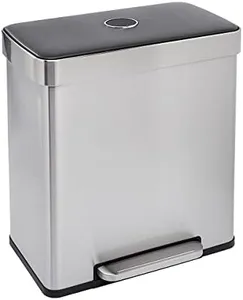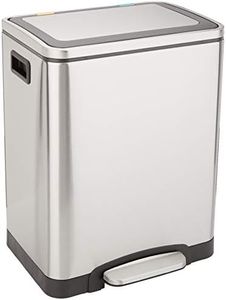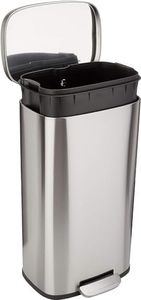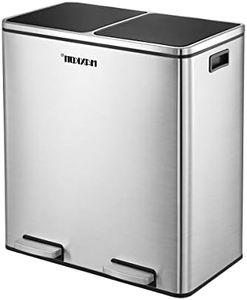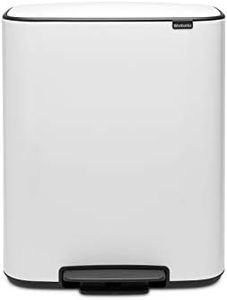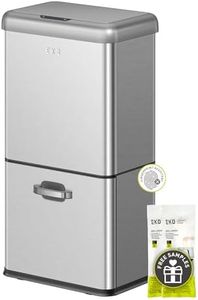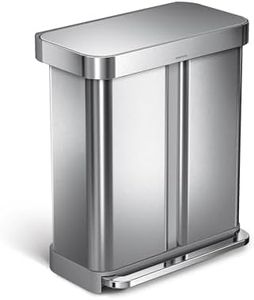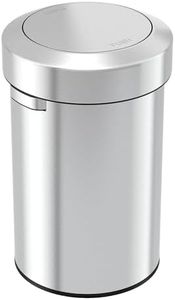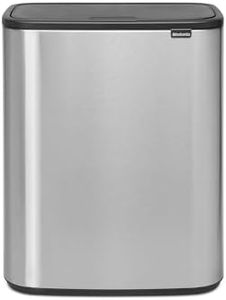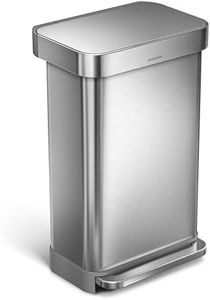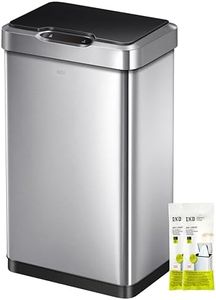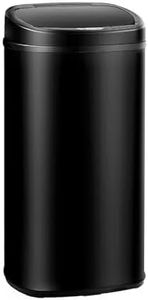We Use CookiesWe use cookies to enhance the security, performance,
functionality and for analytical and promotional activities. By continuing to browse this site you
are agreeing to our privacy policy
10 Best Kitchen Bins
From leading brands and best sellers available on the web.Buying Guide for the Best Kitchen Bins
Choosing the right kitchen bin can really make a difference in how organized and clean your kitchen feels. When picking a bin, consider your daily habits, kitchen size, and the number of people in your household. The best bin not only manages waste efficiently but also fits seamlessly into your kitchen routine and style. Focus on practicality and how easy it is to use and maintain.CapacityCapacity is the amount of waste the bin can hold, usually measured in liters. This is important because a bin that’s too small may overflow quickly, while one that’s too large can take up too much space and may start to smell before it’s emptied. For small households or those who empty bins daily, a smaller capacity (10-20 liters) works well. Medium bins (20-40 liters) are suitable for average households, while large capacity bins (40 liters and above) are best for bigger families or people who don’t want to empty the bin as often. Consider how much space you have and how often you want to take out the trash to find the perfect fit.
Type (Pedal, Touch, Swing, Pull-Out, Sensor)Bin type refers to the way you open and close the lid, which affects convenience and hygiene. Pedal bins open with your foot, keeping your hands free and clean—great for when you’re cooking. Touch and swing lids need a gentle push by hand or elbow, common in compact or budget-friendly options. Pull-out bins are hidden inside cabinets, saving floor space and hiding waste from view. Sensor bins open automatically when you wave your hand, which is very hygienic but slightly more expensive. Choose the type that suits your kitchen layout and your preference for convenience and cleanliness.
MaterialKitchen bins are usually made from plastic, stainless steel, or a combination. Plastic bins are lightweight and affordable, sometimes available in a range of colors but may absorb odors over time. Stainless steel bins look modern, resist odors, and are generally more durable, but can show fingerprints and are heavier. Some bins have anti-bacterial coatings or liners inside. Think about how important the look, durability, and ease of cleaning are for you when choosing a material.
Compartments (Recycling, Waste, Compost)Some bins have more than one compartment, making it easy to sort regular waste, recycling, and sometimes food compost. This feature is important if you want to separate your rubbish without lots of different bins cluttering up your kitchen. Single-compartment bins are simple and perfect for those who don’t need to sort waste. Two- or three-compartment bins are better for families or those who recycle a lot. Pick a configuration based on your household’s habits and local recycling policies.
Odor ControlOdor control refers to features that minimize bad smells from bins, such as tight-fitting lids, filters, or deodorizers. This is especially important if your bin is large, if you throw out a lot of food waste, or if your kitchen gets hot. Odor control can range from simple seal-tight lids to charcoal filters. Choose a bin with more advanced odor control if unwanted smells are a problem in your home.
Ease of CleaningThis specifies how simple it is to keep the bin clean, which depends on the design, shape, and whether it has removable inner buckets or liners. A bin that’s easy to take apart and wash will save you time and keep your kitchen more hygienic. Look for a smooth interior, removable liners, or buckets if you want cleaning to be quick and hassle-free.
Space and PlacementThis is about the size and shape of the bin and how well it fits your kitchen. Tall and slim bins are great for tight spaces, while wide and short bins might tuck under counters or sinks. Consider whether you prefer a free-standing bin, a built-in model, or one that fits inside a cabinet to make the best use of your kitchen space.
